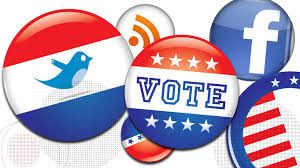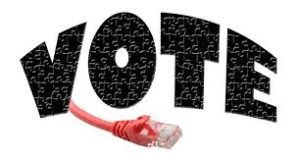‘A nation without shared truth will be hard-to-impossible to govern.’
[AXIOS]
The occupier of the Oval Office, DT’s campaign and key allies plan to make allegations of bias by social media platforms a core part of their 2020 strategy, officials tell me.
- Look for ads, speeches and sustained attacks on Facebook and Twitter in particular, the sources say.
- The irony: The social platforms are created and staffed largely by liberals — but often used most effectively in politics by conservatives, the data shows.
Why it matters: DT successfully turned the vast majority of his supporters against traditional media, and hopes to do the same against the social media companies.
- Republicans’ internal data shows it stirs up the base like few other topics.
- “In the same way we’ve seen trust in legacy media organizations deteriorate over the past year, there are similarities with social media companies,” a top Republican operative involved in the effort told me.
Between the lines: The charges of overt bias by social media platforms are way overblown, several studies have found. But, if the exaggerated claims stick, it could increase the chances of regulatory action by Republicans.
- “People feel they’re being manipulated, whether it’s by what they’re being shown in their feeds, or actions the companies have taken against conservatives,” the operative said.
- “It’s easy for people to understand how these giant corporations could influence them and direct them toward a certain favored candidate.”
How tech execs see it: They know the escalation is coming, so they are cranking up outreach to leading conservatives and trying to push hard on data showing that conservative voices often outperform liberal ones.
Reality check, from Axios chief tech correspondent Ina Fried: What is real is that most of the platforms have policies against bias that some conservative figures have run afoul of.
- Managing editor Scott Rosenberg notes that Twitter is Trump’s megaphone, while Facebook is often his favorite place to run ads.
What’s next: By the time 2020 is over, trust in all sources of information will be low, and perhaps unrecoverable.
A nation without shared truth will be hard-to-impossible to govern.
MIT Management/Sloan Schools
A 4-step plan for fighting social media manipulation in elections
by Meredith Somers
Social media manipulation of voters shows no sign of abating. Two professors propose a new research agenda to fight back.
Since the 2016 presidential election, there’s been no shortage of reports about false news being shared across social media platforms like Facebook and Twitter — and with the 2020 vote only a year away, the question is not when will the misinformation strike, but how can we guard against it?
MIT professor of IT and marketing Sinan Aral and associate professor of marketing Dean Eckles propose a four-step process for researchers to measure and analyze social media manipulation, and to turn that data into a defense against future manipulation.“Without an organized research agenda that informs policy, democracies will remain vulnerable to foreign and domestic attacks,” the professors write in an article for the August 30 edition of Science magazine.
1.
Catalogue exposures to manipulation
To defend against manipulation, Aral and Eckles write, researchers need to index a variety of social media information:
- What texts, images, and video messages were advertised?
- What type of advertisement was used (organically posted, advertised, or “boosted” through paid promotion)?
- What social platforms were these texts, images, and video messages appearing on?
- When and how were they shared and re-shared by users (in this case, voters)?
2.
Combine exposure and voting behavior datasets
In the past, public voting records and social media accounts were compared using data like self-reported profile information. But this type of comparison can be improved by using location data already being collected by social media companies, the researchers write.
This could be something like matching voter registration with home addresses based on mobile location information — the same data used for marketing purposes by social media companies.
This could be something like matching voter registration with home addresses based on mobile location information — the same data used for marketing purposes by social media companies.
One challenge of studying voter behavior, Aral and Eckles write, is that the results aren’t always accurate enough to answer questions.
Social media companies already run A/B and algorithm tests, Aral and Eckles write. The same tests could be used to measure exposure effects.
3.
Calculate consequences of voting behavior changes
Aral and Eckles write that measures like predicted voter behavior — with or without exposure to misinformation — should be combined with data like geographic and demographic characteristics for a particular election. This would help with vote total estimates in a particular area.
4.
Calculate consequences of voting behavior changes
Aral and Eckles write that measures like predicted voter behavior — with or without exposure to misinformation — should be combined with data like geographic and demographic characteristics for a particular election. This would help with vote total estimates in a particular area.



Leave a Reply